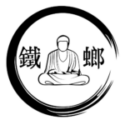A Personal Martial Arts Sanctuary
For many dedicated martial artists, having a personal space to train is essential. My home dojo is set up as a traditional Kung Fu “kwoon” a garage gym designed to support all aspects of training—conditioning, strength development, striking, and grappling. Over the years, wherever I’ve lived, I have always maintained this setup for my own practice and for closed-door students who train under my guidance.
Essential Equipment for Training
The dojo is equipped with a variety of tools and training apparatus, each serving a specific purpose in martial arts development:
Striking & Body Conditioning
Wooden Dummy (Muk Jung / Mook Yan Jong): This is essential for refining footwork, striking techniques, and body conditioning. It is designed to improve structure and precision in techniques.
Sandbags: These include traditional sandbags, steel shot bags, and other iron palm training bags for hand, arm and body conditioning.
Rolling Pins: Used for conditioning shins, improving durability against impact.
Sand Jars: A specialized tool for strengthening finger strength, Tiger Claw, Eagle Claw and other traditional Kung Fu techniques.
Strength & Performance Training
Plyometric Boxes: Used for jump training, agility drills, and explosive power development.
Dumbbells & Weighted Equipment: Homemade grip-strengthening tools, wrist weights, and heavy weapons.
Heavy Balls (D-Balls): Ranging from 10 lbs to 100 lbs, these are excellent for explosive movements and conditioning.
Olympic Lifting Equipment: Plates and barbells support a robust strength-training regimen.
Pull-Up Bar & Rowing Machine: Essential for upper-body endurance and overall conditioning.
Sledgehammer & Tires: Used for tire flipping and striking drills to develop rotational power and core strength.
Traditional Martial Arts & Weaponry
Classical Chinese Weapons: These are not only symbolic but also excellent for training grip strength, precision, focus and coordination. Long and short weapons.
Striking Pads & Protective Gear: Includes boxing gloves and various pads for full-contact and light-contact sparring.
Qi Gong & Meditation Space: An area dedicated to internal energy cultivation, Tai Chi, Yoga and sitting meditation.
Honoring Lineage and Martial Tradition
A crucial aspect of a traditional Kung Fu gym is honoring those who came before us. My dojo features:
Altar & Lineage Pictures: Paying homage to Grandmaster Chiu Leun and the Yip Ming Duk Monks, and respected martial family members.
Twelve Keywords of Attack and Defense: Guiding principles of combat and self-defense.
Friendship Flags: Symbols of the bonds between martial artists across different disciplines.
The Evolution of Training
While maintaining traditional methods, I also incorporate modern athletic training, drawing from my experience as a USA Advanced Sports Performance Coach. Many principles of elite athletic training complement Kung Fu, enhancing endurance, strength, and resilience. General Strength, Ancillaries and Olympic lifting as well as Track Work.
Final Thoughts
This home dojo is more than just a place to train—it’s a testament to dedication, history, and the lifelong journey of martial arts. Whether practicing alone, with students, or reflecting on my lineage, this space keeps the warrior spirit alive.
If you’re considering setting up your own home Training Hall, remember that it’s not about having the most equipment, but about fostering discipline, skills, respect, and the love of martial arts.
Train hard. Stay humble. Respect tradition.
